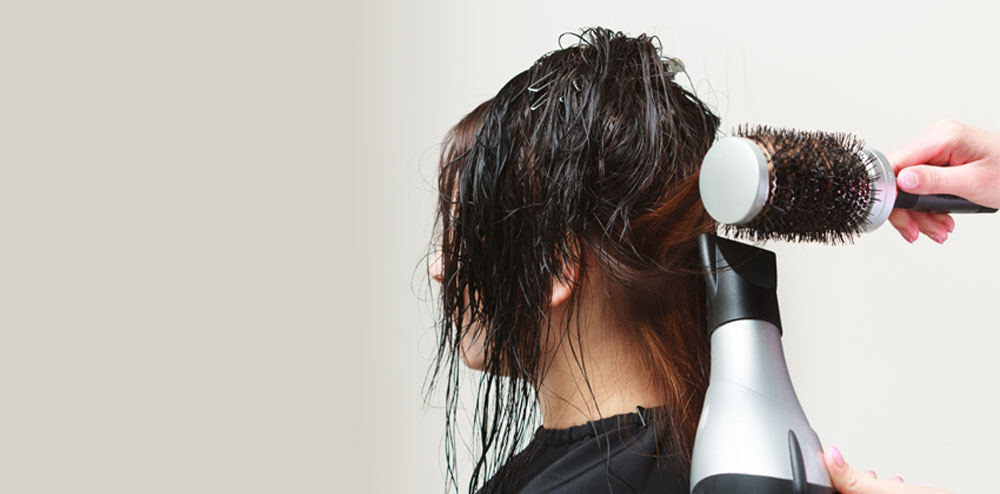Jenna Bentley is the Director of Government Affairs for the Goldwater Institute.
Christina Sandefur is Executive Vice President for the Goldwater Institute.
End Notes
1 Elana Lyn Gross, “How Alli Webb Turned Drybar Into a $100M Business,” Forbes, May 16, 2018, http://www.forbes.com/sites/elanagross/2018/05/15/alli-webb-drybar/#4e4447b14746.
2 Thirty-seven states have criminal punishments for practicing without a license: Alaska, Arizona, Arkansas, California, Colo-rado, Connecticut, Florida, Georgia, Ha-waii, Idaho, Illinois, Iowa, Kansas, Maryland, Michigan, Minnesota, Missouri, Montana, Nevada, New Hampshire, New Jersey, New Mexico, North Carolina, North Dakota, Ohio, Oklahoma, Oregon, Pennsylvania, Rhode Island, South Dakota, Tennessee, Utah, Vermont, Virginia, West Virginia, Wis-consin, and Wyoming. Punishments range from misdemeanors to a class 6 felony in Colorado.
3 A.R.S. § 32-512 (3)(b).
4 A.R.S. § 32-510 (3)(b).
5 A.R.S. § 32-512.01(3)(b).
6 A.R.S. § 32-511 (3)(a).
7 Arizona Board of Cosmetology Examination Information, https://boc.az.gov/licensing/examination-information.
8 “Arizona Board of Cosmetology Hairstylist Candidate Handbook,” Professional Credential Services Inc., September 2018, https://www.pcshq.com/?page=9-27-18_ AZINSCIB2.pdf.
9 A.R.S. § 13-707(A)(1): A.R.S. § 32-571(3)
10 Federalist Society Regulatory Transparency Project, “Occupational Licensing Run Wild,” https://regproject.org/paper/occupational-licensing-run-wild/.
11 Mark Flatten, Protection Racket: Occupational Licensing Laws and the Right to Earn a Living, Goldwater Institute, December 6, 2017, https://www.goldwaterinstitute.org/article/protection-racket-occupational-licensing-laws-and/.
12 Schware v. Bd. of Bar Exam. of State of N.M., 353 U.S. 232, 239 (1957).
13 Dick M. Carpenter II, Lisa Knepper, Angela C. Erickson, and John K. Ross, License to Work: A National Study of Burdens from Occupational Licensing, Institute for Justice, May 2012, https://www.ij.org/images/pdf_folder/economic_liberty/occupational_licensing/licensetowork.pdf. Arizona requires 373 days of training to become a cosmetologist but only 53 days of training to become an EMT and only one day to become a security guard.
14 Kalia M. Simpson et al., “Examination of Cosmetology Licensing Issues,” American Institutes for Research, August 30, 2016.
15 “Occupational Licensing: A Framework for Policymakers,” Department of Treasury Office of Economic Policy, the Council of Economic Advisors, and the Department of Labor, July 2015.
16 Simpson, “Examination of Cosmetology Licensing Issues.”
17 Institute for Justice, “Arizona Hair Braiding: Challenging Barriers to Economic Opportunity,” https://ij.org/case/farmer-v-arizona-board-of-cosmetology/. Five years be-fore, a federal court found an effort by the California Board of Barbering and Cosmetology to impose cosmetology regulations on the practice of hair braiding unconstitutional because, as with blow-drying, the practice does not involve the cutting of hair or treatment of the scalp. Cornwell v. Hamilton, 80 F. Supp. 2d 1101, 1108 (S.D. Cal. 1999).
18 Institute for Justice, “Governor Signs Bill Freeing Eyebrow Threaders from Arbitrary Licensing Scheme,” news release, March 16, 2012, https://ij.org/press-release/az-eyebrow-threading-release-3-16-2012/.
19 Madeleine Winer, “Arizona Makeup Artists No Longer Need Cosmetology License,” Arizona Republic, June 30, 2015, https://www.azcentral.com/story/news/arizona/politics/2015/06/30/arizona-makeup-artists-license/29546205/.
20 20 A.R.S. § 32-506 (6).
21 A.R.S. § 13-3721.
22 Id.
23 Boice v. Aune, CV2011-021811 (Maricopa Cty Super. Ct. Apr. 30, 2012) Amend. Compl. 24-7, https://www.goldwaterinstitute.org/wp-content/uploads/2017/08/3Complaint.pdf.
24 “College Affordability and Transparency Center,” College Affordability and Transparency List, U.S. Department of Education, 2016, collegecost.ed.gov/catc/.
25 Kaila M. Simpson et al., “Examination of Cosmetology Licensing Issues,” American Institutes for Research, August 30, 2016.
26 David Wessel, “How to Find Out What Graduates of That Cosmetology Pro-gram Actually Make,” Upfront (blog), The Brookings Institution, June 25, 2015, www.brookings.edu/blog/up-front/2015/06/25/how-to-find-out-what-graduates-of-that-cosmetology-program-actually-make/.
27 Wessel, “How to Find Out.”
28 “Student Loan Default Rates by School by State 2017,” The Student Loan Report, October 16, 2017, studentloans.net/student-loan-default-rates-2017/.
29 Meredith Kolodner and Sarah Butrymowicz, “A $21,000 Cosmetology School Debt, and a $9-an-Hour Job,” The New York Times, December 26, 2018, https://www.nytimes. com/2018/12/26/business/cosmetology-school-debt-iowa.html.
30 Ibid.
31 Jessica Silver-Greenberg et al., “When Unpaid Student Loan Bills Mean You Can No Longer Work,” The New York Times, November 18, 2017, www.nytimes. com/2017/11/18/business/student-loans-licenses.html.
32 “Occupational Licensing: A Framework for Policymakers,” Department of Treasury Office of Economic Policy, the Council of Economic Advisors, and the Department of Labor, July 2015.
33 “House Military, Veterans and Regulatory Affairs Committee.” 02/15/2017 – House Ways and Means – Feb 15th, 2017 (January 29, 2018), azleg.granicus.com/MediaPlayer. php?viewid=13&clip_id=20254&meta_id=493888 (3:18:00).
34 Dick M. Carpenter II, Lisa Knepper, Angela C. Erickson, and John K. Ross, License to Work: A National Study of Burdens from Occupational Licensing, Institute for Jus-tice, May 2012, p. 33, https://www.ij.org/images/pdf_folder/economic_liberty/occupational_licensing/licensetowork.pdf.
35 Dick M. Carpenter II (2011). “The Power of One Entrepreneur: A Case Study of the Effects of Entrepreneurship,” Southern Journal of Entrepreneurship 4, no. 1 (April 2011): 19-35.
36 “Institutional Eligibility,” Federal Student Aid, U.S. Department of Education, 2010.
37 VA Code § 54.1-701(7).









